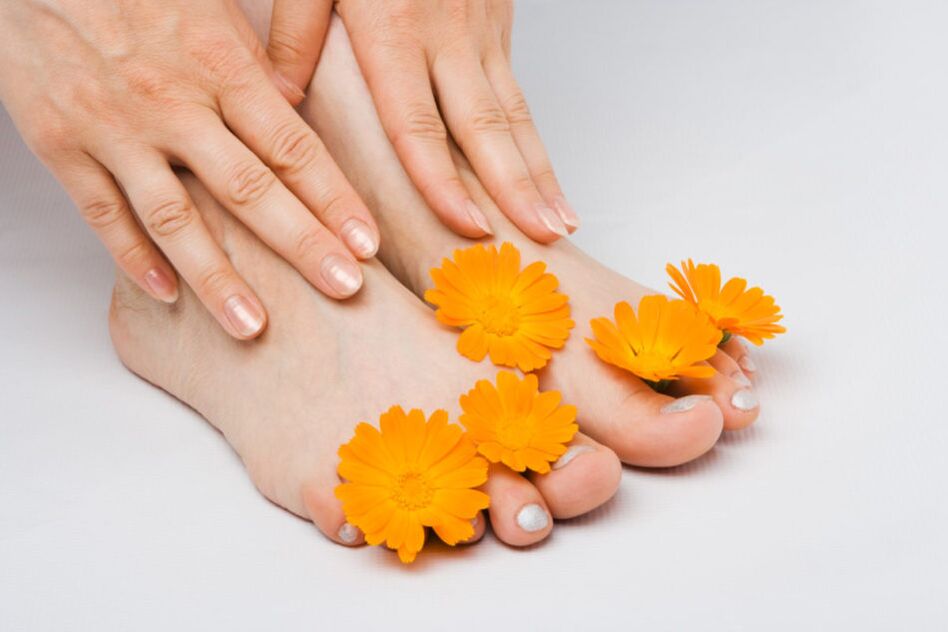
The defeat of toenails with a fungal infection is associated not only with an external infection, but also with the state of the microflora in the human body.
As you know, mushrooms of various species (there are thousands of them) live successfully in the human body and are opportunistic organisms. This means they are not dangerous as long as the population is kept at acceptable levels. If there are too many of them, they will show their toxic properties and negatively affect health.
Onychomycosis (fungal infection of the nails) indicates that the body cannot withstand the fungal infection and maintains the necessary acid-base balance of the skin and the internal environment (pH).
Proper comprehensive treatment includes both external agents and adherence to a specific nutritional protocol that will help reduce the activity of the infection.
Effective treatments
- drug therapy.
- Radical methods with softening and gradual removal of the nail plate.
- Conservative methods that do not require removal of a nail: ointments, lotions, compresses, baths.
Antifungal diet

For the duration of the treatment, it is recommended to refuse all types of products containing fungal cultures:
- Baked goods and bread on yeast dough (you can use bread or yeast-free flatbread);
- almost all types of cheese, except adyghe cheese, mozzarella, feta cheese and burrata;
- fermented milk products (kefir, yogurt).
You should also limit or temporarily exclude sugar and sweets as well as sweet fruit and starchy vegetables (potatoes, beets)from your diet.
These supportive measures will increase the effects of external drugs and the treatment will be faster.
Important! If the patient is treating anemia and taking iron supplements, it must be remembered that iron strengthens the protective fungal membrane.
It is best to discontinue these medications during antifungal therapy.
Medicines or folk remedies
If the infection is neglected and has already caused deformation of the nail plates, drug therapy is more suitable, as it can suppress the activity of the fungal colony.
If the initial symptoms are minor, you can try home remedies with folk remedies.
Many experts believe that it is quite dangerous to attack fungi with drug therapy, as it provokes a strong reaction from microorganisms that leads to resistance. The stronger the attempts to remove the fungal infection, the stronger the resistance and resistance to chemical attack. When a doctor chooses drug treatment, he tries to change drugs regularly so as not to provoke addiction.
Treating toenail fungus at home
Treating a yeast infection at home is beneficial with good hygiene and good practices, but you may need to be patient.Andriasyan's method
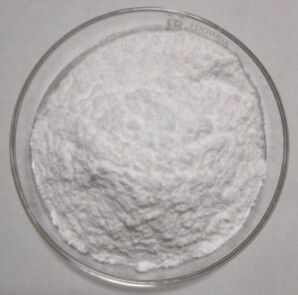
Usually the infection becomes noticeable after the color or shape of the nails has changed. In fact, the fungus grows in bed under the nail plate, where it penetrates through the infected sole of the foot or penetrates under the edge of the nail.
That is why Doctor Andriasyan's method aims to remove the nail plate and then treat it.
The affected nail is gradually dissolved with a pharmacy agent, which is a powder made from 15 parts of barium sulfide and 85 parts of talc.
- The powder is mixed with water, applied to the nail in the form of a paste for 30-40 minutes, constantly moistened with a pipette. You can make a small indentation in the 5mm layer of the paste and add water to it every 3 minutes so that the drug works continuously.
- The gruel is washed off, the softened layer of the nail is removed with a scalpel, trying not to damage the nail bed, and then onycholysin is reapplied. You can remove the entire plate in 2-3 applications, this is important because the fungus affects all of the nail tissue.
- The exposed surface is treated with a 5% iodine solution.
- Vaseline-based paste is applied to the nail bed. It is made from salicylic acid, lactic acid (or benzoic acid), and resorcinol. Each ingredient requires 15 g, they must be mixed with 55 g of petroleum jelly. You can make the paste yourself, all preparations are available at the pharmacy.
2-3 layers of gauze and compression paper are applied to the paste, the bandage lasts 48 hours. With 3 applications, the affected surface is completely cleaned of the keratinized skin layers and the affected tissues. - Salicylic Vaseline is applied to the bed under the bandage for a further 48 hours.
- The nail bed is treated with iodine tincture 1-2 times a day until the nail is restored.
Quick and effective alternative recipes for treating mycosis
Using herbal fungicides and simple home remedies can help fight fungal infections.
It is important that you wash your feet thoroughly before any wellness procedure, trim the nails in good time and remove the epithelium if the condition of the skin allows it.
Vinegar
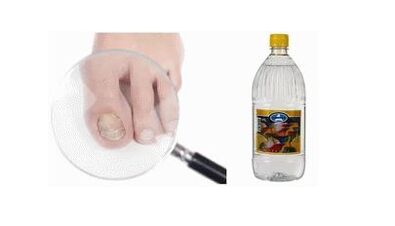
Vinegar has a pronounced antifungal effect, as the acidic environment destroys the reproductive capacity of the fungus.
For household use, you can use cider, wine, and common vinegar. It is just important to remember the concentration of the substance.
Vinegar essence contains approx. 70-80% of the substance, it must be diluted with water in order not to cause chemical burns.
Example for 70% vinegar essence:
- to obtain a 3% concentrate, the proportion is 1: 20 (1 part vinegar and 20 parts water); 6% acetic acid is diluted 1: 11; 9% solution is diluted 1: 7.
It is recommended to start treatment with acetic acid in low concentrations and gradually increase it to 9%.
fan.Before using this method, you should wash your feet thoroughly, trim your nails and remove the keratinized epithelium as much as possible.
During the treatment process, the hardened skin will become softer and it will gradually be possible to completely remove it.
For 3 liters of heated water you need 1 liter of apple cider vinegar or a glass of 3% vinegar essence. Soak clean feet in the bath for 15-20 minutes until the solution cools. After bathing, do not rinse the solution off your skin; let it dry.
A few drops of iodine, manganese crystals or tea tree oil can be added to the bath to increase the antifungal effect.
Baths can be taken for a long time. It is important to monitor the state of health and the dynamics of recovery.
A slight burning sensation on the surface of the skin is acceptable, but the pain should not be tolerated. If the pain syndrome is severe, it is recommended to lower the concentration of vinegar or temporarily leave the baths and use other means.
People with serious injuries to the integrity of the skin of the feet (cracks, ulcers) are shown to use vinegar baths carefully.
lotions and compresses.Wet gauze bandages soaked in vinegar solution are applied to the affected surface for 3 hours until dry. It is important not to create a greenhouse effect by covering the bandages with plastic wrap. Ventilation is required.
First solution:
- 100 ml of water.
- a few drops of iodine.
- a teaspoon of vinegar.
Second solution:
- 2 tablespoons of water.
- tablespoon of glycerin.
- 2 tablespoons of 3% vinegar.
Treatment lasts from 2 months to a year.
If the use of vinegar causes irritation and allergic reactions, discontinue therapy.
Tea tree oil
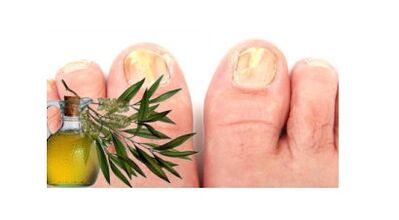
Tea tree has a strong fungicidal effect, it contains around a hundred fractions of terpenes - substances that have a toxic effect on fungi and microorganisms.
It is more effective to use 100% crude oil instead of cosmetic oil. It contains 40-50% tea tree oil in half with other vegetable oils.
Undiluted oil is rubbed into the nail plates and the rough skin around them. The product does not need to be rinsed or wiped, it partially dries, partially penetrates the fabrics. Use the medicine twice a day for 2 months and longer.
A refreshing bath with warm water and a few drops of tea tree oil can be used to soothe and deodorize the skin.
hydrogen peroxide
Most often, a 3% hydrogen peroxide standard solution is used in therapy, which is sold in finished form in a pharmacy. Peroxide is known as an antiseptic, hemostatic and deodorant, and its antimicrobial and antifungal effects are also known.
Peroxide treatments.
Baths: Add 2-3 ml of peroxide to 3 liters of warm water, keep feet in the solution for 10-15 minutes, then dry them off without wiping them off.
You can buy hydrogen peroxide in powder or tablet form and add some water to the substance to turn it into a slurry. This gruel is carefully applied to the affected nail with a cotton swab for no more than 5 minutes, and then washed off.
Propolis
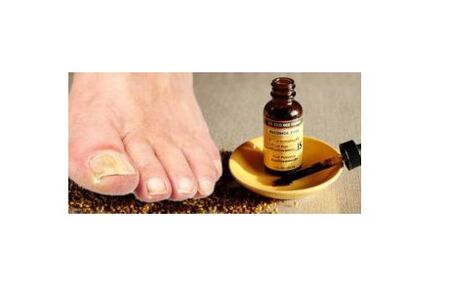
Propolis is a gummy sticky substance made by bees from pollen using their own enzymes. Thanks to its unique chemical composition, it successfully fights fungal infections.
Pharmaceutical production of propolis tincture can be used as follows:
Bowls are made at the rate of 1 teaspoon of the product per 1 liter of hot water. It should be tolerable but hot to keep your feet in the liquid for 20 minutes. It is important not to wash the solution off your feet.
Lotions are made from a cotton swab soaked in tincture, which is bandaged for several hours (preferably for the whole night).
An ointment can be made from pure, untreated propolis: Mix 50 g of the substance with 100 g of Vaseline. The ointment is applied liberally to the affected nail and is gradually absorbed, the residue can be dabbed off with a paper towel or wait until it is completely absorbed.
All propolis products are used daily for 2 months and longer if necessary.
iodine tincture
The complex use of iodine was already noted in the composition of various products. Iodine has the ability to coagulate (glue) protein: mushrooms, which are made of protein compounds, stick together and die.
Even if the patient has no other medication at hand, he can only start treatment with the alcoholic iodine tincture from the pharmacy.
Iodine lotions. The therapy is very simple:
It is necessary to soak a cotton ball with tincture and fix it on the affected nail for an hour to avoid getting the substance on the skin. Iodine is unsafe for the skin, it can cause chemical burns. Avoid contact with mucous membranes.
A slight burning sensation is appropriate. The procedure can be done daily for 1, 5-2 months.
Greater celandine
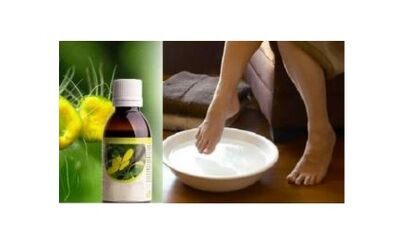
Since celandine is a highly poisonous herb, a tolerance test must be carried out. To do this, a small amount of the product is applied to the skin of the wrist with celandine and waiting for a reaction. In the event of intolerance, the skin reacts with redness, rashes and itching, a few minutes are sufficient.
If well tolerated, celandine can be used in the form of juice, decoction, oil or tincture.
You can make your ownjuiceby picking up fresh grass and rubbing it well with rubber gloves. This juice can not be stored for a long time, it is better to prepare each serving separately. Pure juice is applied to the affected nails for 10-20 minutes, and then washed off. You can repeat the process every day, but this is only possible in summer.
Celandine oil is sold in a pharmacy and used to rub into the nail plate twice a day, morning and evening. The nails may turn yellow from the product, this is normal.
Bowlswith celandine decoction are made from dry pharmaceutical raw materials and water.
First, add 7 tablespoons of dry herb to 2 liters of boiling water. The composition is kept in a water bath for 15 minutes.
Then it is filtered and used for a bath, topping up with hot water if necessary. The duration of the procedure is 20 minutes, there is no need to wash off the broth.
Celandine tincture can be bought in the pharmacy or made yourself. It is used to treat affected nails and is lubricated twice a day.
potatoes
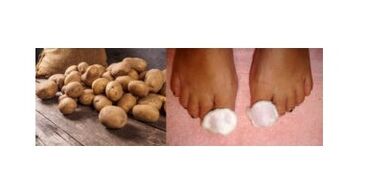
Potato tubers contain substances that can help fight fungal infections, but they're not powerful. Use raw potatoes or potato broth against the fungus.
It is necessary to rub raw potatoes on a fine grater, apply the resulting porridge to sore nails and bandages for an hour. Rinse with water.
For the sake of simplicity, you can replace the porridge with thin potato slices.
Option: squeeze the juice out of the pulp, soak the cotton pads with it and apply it to the nails.
Potato broth is used in the form of foot baths after partial cooling. Procedures with potatoes must be done daily for 2 months.
The most effective medicines
Medicines are essential for the complex treatment of complex advanced infections.
Insidetablets or capsules are prescribed.
Topically applied:
- ointments and creams;
- lacquers;
- solutions;
- natural preparations.
If folk remedies can be used relatively calmly, then drug therapy should be prescribed by a doctor on the basis of the data of the analyzes and symptoms. Do not self-medicate or prescribe pills.
The better treatments for nail fungus
If you are a reader with reading and writing skills, start reading at the end. Hence, especially for you, the main useful conclusions:
- When treating onychomycosis, it must be understood that the fungus always affects the entire body and not a specific part of the body. Therefore, complex therapy is required.
- No remedy can be seen as a panacea for fungal infections. They need drug therapy, simple everyday hygienic procedures and adherence to a nutritional protocol.
- Many treatment regimens for onychomycosis are designed to last up to 2 months. During this time, the nail plate has time to completely renew itself. It is important not to stop therapy prematurely.
- Mycoses are difficult to cure, it is impossible to completely get rid of fungal infections in the human body, but you can significantly reduce the pathogenic effects of fungi and maintain a healthy level of immunity.
Be healthy!































